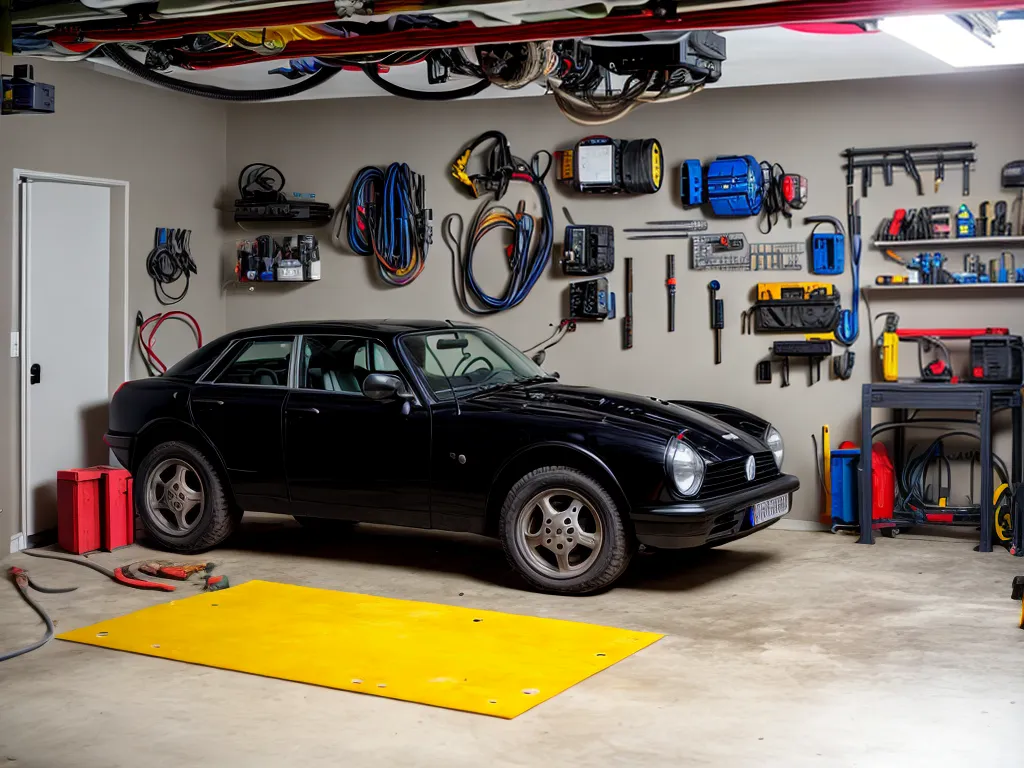
Installing a subpanel in your garage allows you to increase the number of available circuits to power additional lights, outlets, appliances, EV chargers, or other electrical loads. While hiring an electrician is recommended, a homeowner with basic electrical knowledge can DIY a garage subpanel installation and save on costs. This comprehensive guide covers everything you need to know to successfully add a subpanel to your garage.
Planning Your Garage Subpanel Project
Before getting started on the installation, take time to properly plan out your garage subpanel project. This important first step will ensure your new subpanel is sized appropriately and installed correctly.
Determine Electrical Load Requirements
Calculate the total wattage of all existing and planned electrical loads in the garage. This includes lights, outlets, major appliances, EV chargers, power tools, etc. Identify each load, its wattage rating, and how many hours per day it will be in use. Add up all of the wattage to determine the total electrical load.
Ensure your new subpanel is rated to handle the total load. Also, leave room for future expansion. A 100 amp subpanel is common for garages.
Choose a Subpanel Location
Pick an appropriate location to mount the new subpanel. It should be:
- Near the main electrical panel
- In a protected indoor area
- With at least 30 inches of open space in front
Also consider how hidden you want the subpanel to be.
Select Proper Wire Size
Determine the correct wire size based on your garage's electrical load. For most 100 amp subpanels, #2 or #3 AWG copper wire is sufficient. Using wire that's too small can cause voltage drop and other issues.
Get Required Permits
Check with your local building department to see if you need an electrical permit for adding a subpanel. Many areas require permits when homeowners do electrical work.
Installing the New Subpanel
Once you've completed the planning stage, you're ready to install the new subpanel in your garage. Follow these key steps:
Turn Off Main Power
Shut off the main circuit breaker in your existing electrical panel before starting any work. Use a contactless voltage tester to confirm power is off.
Mount the Subpanel
Securely mount the new subpanel to a wall stud using appropriate drywall screws or bolts. Ensure it is level and meets code requirements for clearance space.
Run Wire to Main Panel
Run the correct size copper wire from the main panel to the new subpanel location. Use metal conduit for protection. Pull 2 hot wires, 1 neutral, and 1 ground wire.
Connect Wires and Ground
Connect the hot wires from the main panel to the main lugs or main breaker in the subpanel. Connect the neutral and ground wires. Ensure tight and secure connections.
Install Breakers
Snap circuit breakers of the appropriate amperage into the new subpanel. Leave room for additional breakers. Connect the hot wires from each new circuit to a breaker.
Label Circuits
Create a detailed label for each circuit in the new subpanel. This makes it easy to identify and shut off individual circuits for maintenance.
Connect Equipment and Devices
Run wiring from the new breakers to connect lights, outlets, appliances, EV chargers, and other electrical loads according to plans.
Inspect and Test
Thoroughly inspect the entire subpanel installation and test operation of all circuits. Verify proper grounding and that there are no exposed conductors.
Finishing Touches
After successfully installing the new subpanel, complete a few final steps to finish off the project.
Install Front Cover
Attach the metal front cover securely over the subpanel to protect internal wires and breakers.
Obtain Final Inspection
Call the building department to schedule a final electrical inspection of the new subpanel by the AHJ (authority having jurisdiction).
Update Breaker Labels
Add labels for the new subpanel breakers on your main electrical panel, noting which garage circuits they control.
With proper planning and attention to detail, you can safely and successfully install a new subpanel in your garage. This will provide the additional electrical capacity needed for all your current and future power requirements. Just be sure to follow code and get professional help if needed.